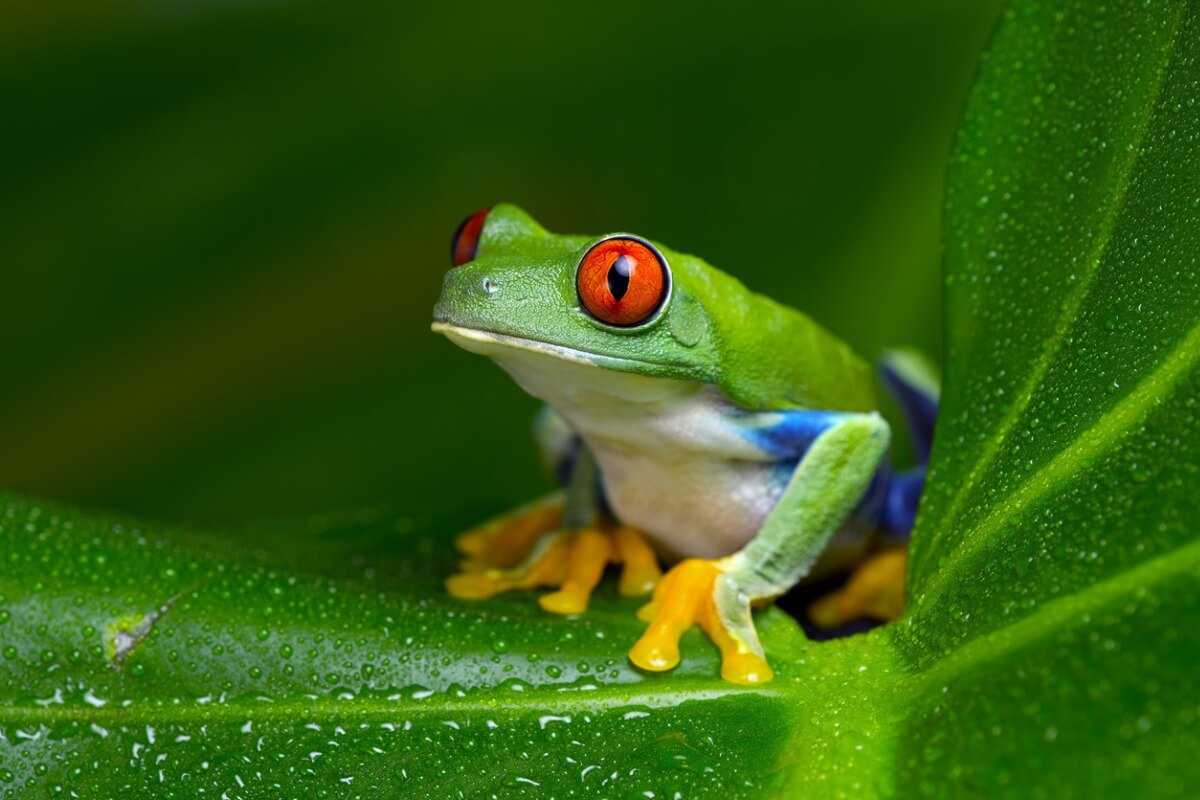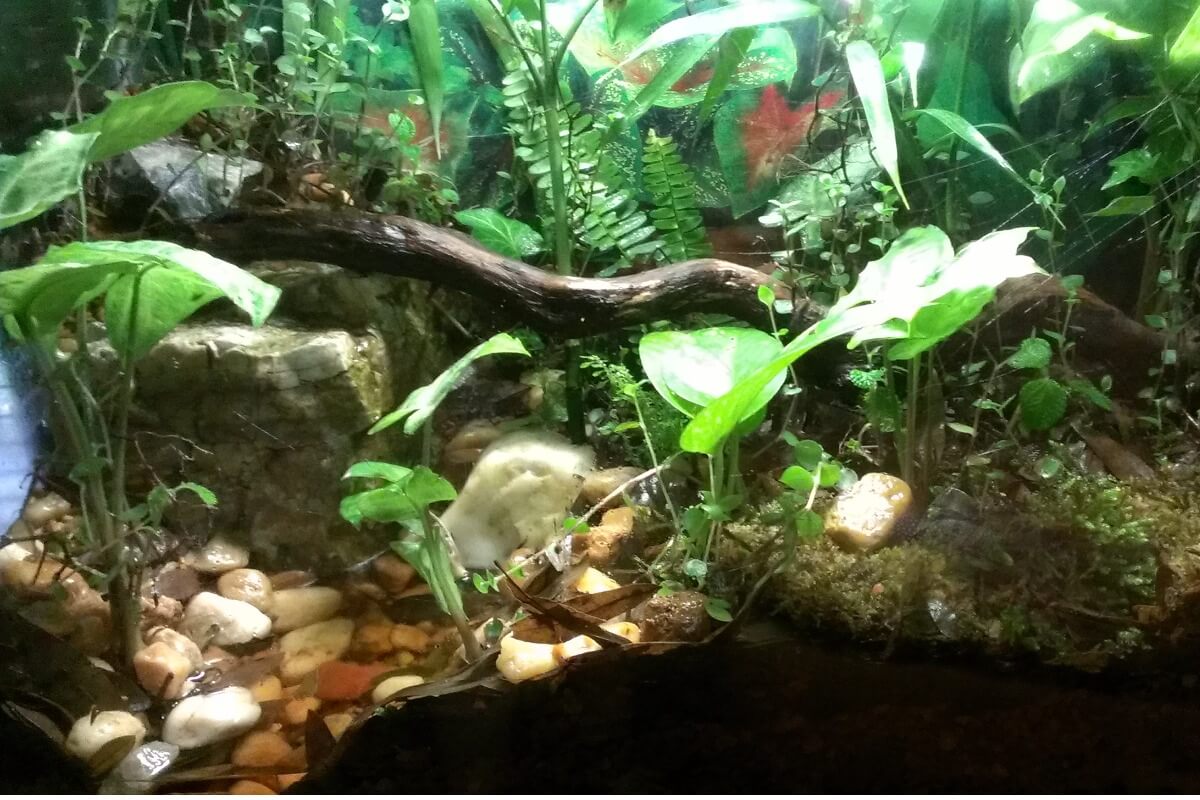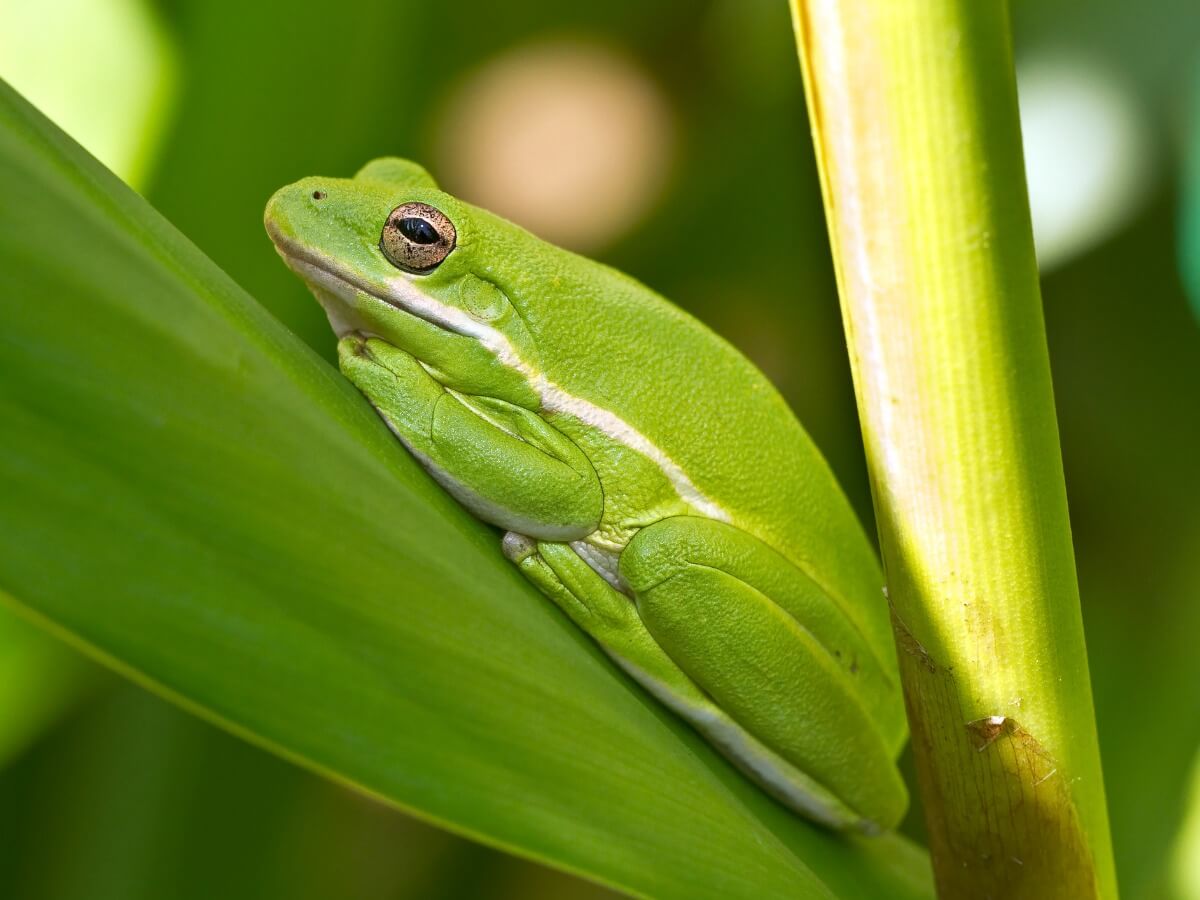7 Tips for Looking After a Frog


Written and verified by the biologist Samuel Sanchez
Exotic animals are increasingly finding their way into homes. Lizards, snakes, turtles, frogs, newts, and invertebrates are just some of them, but there are many more and they come in all sizes and colors. Here we’ll tell you about some basic care tips when looking after a frog.
Amphibians are quite fragile beings, which is why they’re considered the most endangered vertebrate taxon globally in nature. Having a frog at home may seem like a simple task, but it requires patience, knowledge, and, above all, respect for the environment. Be sure to read the tips we’re going to show you to get started in the world of terrarium keeping.
1. Never take the frog from its habitat
There’s no debate on this point. As the International Union for Conservation of Nature (IUCN) indicates, 41% of the described amphibian species are in danger of extinction. Climate change, forest deforestation, water pollution, and the spread of pathogens (such as ranavirus and chytrid) are the main culprits.
It should also be noted that, although some amphibian populations are large, very few reproduce each year in them because of their mating systems. Removing an adult frog from its natural environment is a real blow to the ecosystem, as few frogs are lucky enough to reach the reproductive stage.
Never take an animal from its habitat. In addition to being unethical, it’s considered illegal.

2. Choose the species that you’re going to acquire very well
Before informing you about different care tips for looking after a frog as a pet, you should know what species to choose and where you’re going to buy it. Look only for sellers with physical stores that have permission to breed and provide you with the relevant papers of assignment. This is the only way to be sure that your pet has been bred in captivity (and not taken from the wild).
Beyond this, you must take into account that each species of amphibian has its own adaptations. Frogs of the genus Agalychnis are strictly arboreal, while those of the genus Xenopus live in water hardly ever come to the surface. Terrarium setup should always be done before (not after) acquiring the animal.
3. Set up a bioactive terrarium
If there’s one thing all amphibians have in common, it’s this: they require high relative humidity to live. Since they use their skin to breathe, their skin must always be moist and water must be present in the environment. Although the exact ranges vary depending on the species, any terrarium with a frog as an inhabitant should have a humidity of 70-90%.
To achieve these values, you should set up a facility with natural plants, logs, absorbent substrate (such as coconut fiber) and always put a pool of varying depth so that the amphibian can hydrate. Be careful and be well informed about the aquatic part of your terrarium, as not all frogs swim well (the Pacman frog is an example).
In addition to this, you should also keep in mind that most amphibians come from tropical regions. This means that they’ll require an external heat source (in the form of a thermal blanket) to keep them from freezing to death. The suitable temperature range for many frogs is between 24-28°C, although there are exceptions.
The depth and extent of the aquatic part of the terrarium will depend on the requirements of each species.

4. Set the terrarium dimensions according to the species
Terrarium dimensions will depend on the requirements of the individual frog. For example, the red-eyed frog (Agalychnis callidryas) is arboreal and very active, so an installation of 30 x 70 x 30 centimeters (1 x 2.3 x 1 feet) in length, height, and width will be necessary. On the other hand, the aforementioned Pacman frog is terrestrial and moves very little, so a 50 x 20 x 20 cm (20 x 11 x 11 inches) terrarium will suffice.
Some frogs need plants and branches for climbing, while others require a lot of substrate and burrowing dens. It all depends on the species.
5. Keep the frog with companions of the same species (with some exceptions)
When looking after a frog, you almost always need to keep more than one of the same species. Tree frogs, dart frogs (genus Dendrobates) and terrestrial toads, for example, live in groups. However, never mix frogs of different species and make sure that they’re all the same size, otherwise they could eat each other.
Again, the Pacman frog is an exception here. It should be kept alone because it’ll eat anything it can fit in its mouth.
6. You will have to raise live food
All amphibians are insectivorous predators without exception. This means that they feed on invertebrates and, in addition, their prey must be alive in order for them to be attracted to them. In other words, looking after a frog as a pet involves having cultures of worms, crickets, and cockroaches in the home.
This may seem unpleasant to many, but there’s no other option. Most frogs eat a variable number of prey items 2-3 times per week, although this varies by species. In addition, once a week the insects should be sprayed with amphibian-specific vitamin supplements.
Don’t pick up insects in the street or fields as they may be sick or have ingested insecticides.
7. Be very careful when handling your frog
Having a frog as a pet isn’t anything like having a cat or a dog. They don’t like to leave their terrarium, are terrified of being handled, and are very easily stressed. If you hold your amphibian every day and try to play with it, it won’t be long before it dies.
Also, keep in mind that amphibian skin is extremely sensitive. If you have to hold yours for any reason (such as cleaning), wear nitrile gloves or wash your hands thoroughly (without soap). The same applies to any product you put in the terrarium: disinfect it with boiling water, but never add chemicals.
Some countries have drinking water with a high chlorine content. In these cases, it’s best to use natural bottled water to increase the humidity in the terrarium and fill the pool.

As you may have noticed, looking after a frog as a pet isn’t at all easy. It is possible to keep one of these cute animals at home, but the terrarium must be very well set up and the keeper must have some previous experience of keeping exotic animals.
All cited sources were thoroughly reviewed by our team to ensure their quality, reliability, currency, and validity. The bibliography of this article was considered reliable and of academic or scientific accuracy.
- IUCN Red list, IUCN. Recogido a 10 de noviembre en https://www.iucnredlist.org/
This text is provided for informational purposes only and does not replace consultation with a professional. If in doubt, consult your specialist.